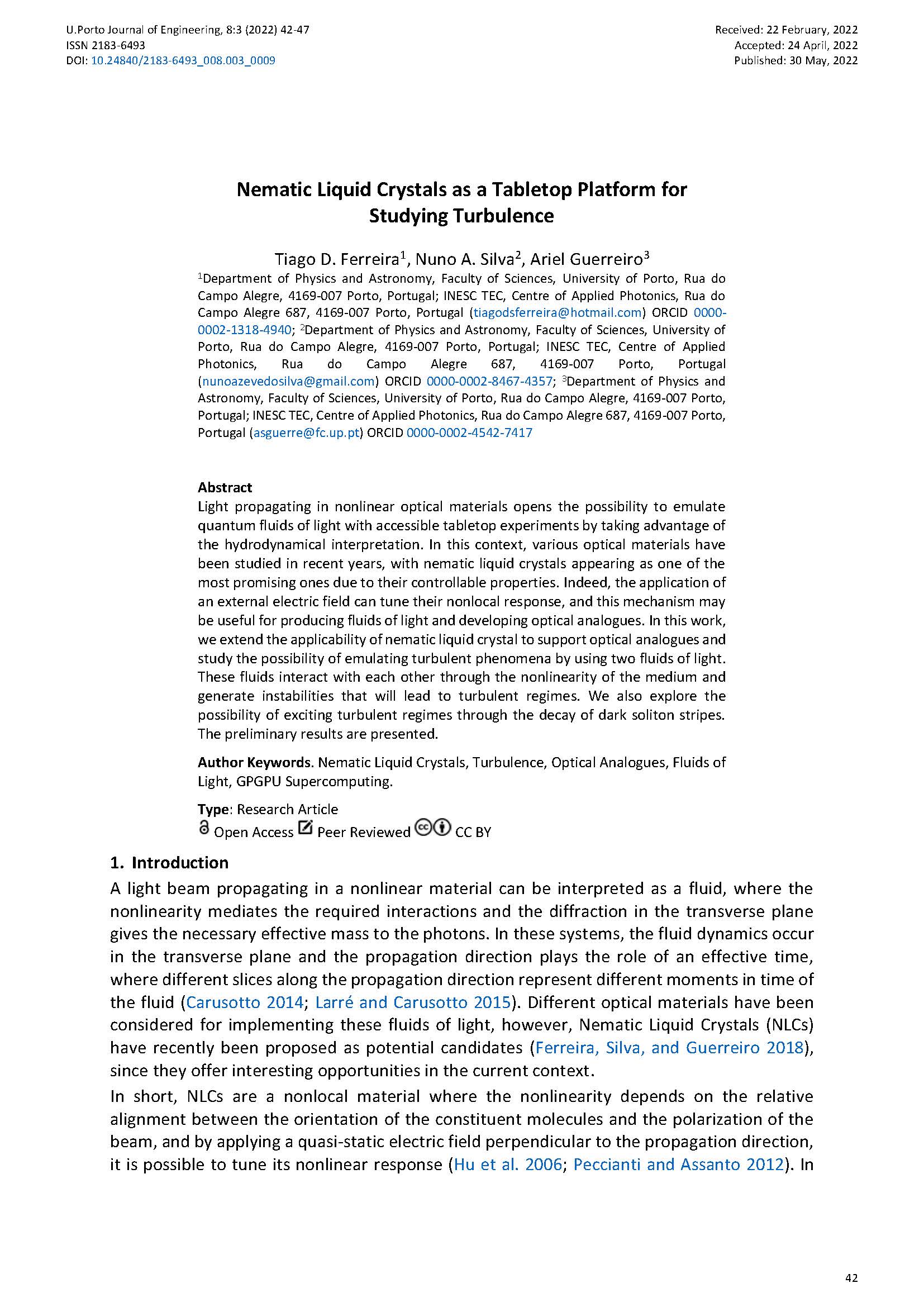Nematic Liquid Crystals as a Tabletop Platform for Studying Turbulence
Main Article Content
Abstract
Light propagating in nonlinear optical materials opens the possibility to emulate quantum fluids of light with accessible tabletop experiments by taking advantage of the hydrodynamical interpretation. In this context, various optical materials have been studied in recent years, with nematic liquid crystals appearing as one of the most promising ones due to their controllable properties. Indeed, the application of an external electric field can tune their nonlocal response, and this mechanism may be useful for producing fluids of light and developing optical analogues. In this work, we extend the applicability of nematic liquid crystal to support optical analogues and study the possibility of emulating turbulent phenomena by using two fluids of light. These fluids interact with each other through the nonlinearity of the medium and generate instabilities that will lead to turbulent regimes. We also explore the possibility of exciting turbulent regimes through the decay of dark soliton stripes. The preliminary results are presented.
Downloads
Article Details

This work is licensed under a Creative Commons Attribution 4.0 International License.
Authors who publish with this journal agree to the following terms:
- Authors retain copyright and grant the journal right of first publication with the work simultaneously licensed under a Creative Commons Attribution License that allows others to share the work with an acknowledgement of the work's authorship and initial publication in this journal.
- Authors grant the journal the rights to provide the article in all forms and media so the article can be used on the latest technology even after publication and ensure its long-term preservation.
- Authors are able to enter into separate, additional contractual arrangements for the non-exclusive distribution of the journal's published version of the work (e.g., post it to an institutional repository or publish it in a book), with an acknowledgement of its initial publication in this journal.
- Authors are permitted and encouraged to post their work online (e.g., in institutional repositories or on their website) prior to and during the submission process, as it can lead to productive exchanges, as well as earlier and greater citation of published work (See The Effect of Open Access).

